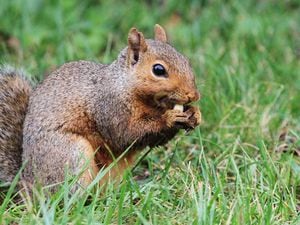This is how squirrels organise their favourite nuts
They arrange their stockpile using a cognitive strategy known as “chunking”.

Like us, squirrels have a preference for what kind of foods they like – in this case, nuts – and have been found to organise their bounty by variety, quality and favourites.
Research from the University of California, Berkeley reveals the first evidence of squirrels arranging their nutty stockpile using a cognitive strategy known as “chunking”.
We may not know it, but us humans, along with many other animals, use “chunking” all the time to organise everything from household items to information into smaller, more manageable collections – much like subfolders on a computer.
Fox squirrels hoard up to 10,000 nuts a year and divide their caches by the types of nut they are storing.

The researchers say this rather sophisticated technique not only allows squirrels to remember where they have stored their prized treats but also protects them from potential pilferers.
“Squirrels may use chunking the same way you put away your groceries,” said study senior author Lucia Jacobs.
“You might put fruit on one shelf and vegetables on another. Then, when you’re looking for an onion, you only have to look in one place, not every shelf in the kitchen.”
The researchers gave squirrels 16 nuts in rows of four, for instance four almonds followed by four pecans, then hazelnuts and walnuts.
They gave other squirrels the same 16 nuts but in a random order.
The bushy-tailed rodents hid almonds, pecans, hazelnuts and walnuts in various wooded locations on the UC Berkeley campus.

They found that the squirrels who foraged at a single location organised their caches by nut type, while those foraging in multiple locations deliberately avoided caching in areas where they had already buried nuts, rather than organising nuts by type.
“These observations suggest that when lacking the cognitive anchor of a central food source, fox squirrels utilise a different and perhaps simpler heuristic (problem-solving approach) to simply avoid the areas where they had previously cached,” the study concludes.
The research is published in the Royal Society Open Science journal.






